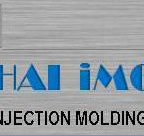How to Achieve Speed and Flexibility with Rapid Aluminum Tooling?
Achieving efficiency is non-negotiable in today’s fast-paced manufacturing landscape, where every second counts. One innovative solution gaining widespread attention is Rapid Aluminum Tooling.
Ahead in this blog, we’ll delve into actionable strategies that can empower manufacturers to achieve unparalleled efficiency by leveraging the speed and flexibility offered by this cutting-edge approach.
Understanding Rapid Aluminum Tooling:
Rapid Aluminum Tooling stands as a transformative force in the realm of manufacturing. At its core, this methodology involves using aluminum molds to expedite production cycles.
The choice of aluminum, distinguished by its lightweight yet durable nature, plays a pivotal role in accelerating processes, offering a multitude of advantages over traditional tooling materials.
Key Strategies for Achieving Speed:
1. Design Simplicity: The foundation for speed lies in the simplicity of design. However, it’s crucial to not only consider the initial design but also to explore modular design concepts. Modular designs allow for interchangeable components, reducing the need for redesign when alterations are necessary. This adaptability enhances the overall efficiency of the manufacturing process.
2. Optimized Machining: Besides precision machining, integrating advanced CNC technologies can further expedite the manufacturing process. Computer Numerical Control (CNC) machining allows for automated and highly precise tool movements, reducing manual intervention and minimizing the chances of errors. The implementation of CNC machining aligns with the pursuit of efficiency through technological advancements.
3. Utilize Simulations: Before the physical machining begins, leverage simulation tools to assess and optimize the manufacturing process virtually. Computer-aided simulations can identify potential issues, allowing for adjustments in the digital realm before the production phase. This preemptive approach enhances accuracy and significantly contributes to speeding up the overall process.
Emphasizing Flexibility in Manufacturing:
Flexibility is a distinguishing factor in an era marked by dynamic market demands. Rapid Aluminum Tooling not only addresses the need for speed but also brings inherent flexibility to the manufacturing process. The ability to adapt swiftly to changing demands is a distinct advantage, allowing for quick adjustments to production schedules and accommodating variations in product specifications.
Design Considerations for Speed and Flexibility:
Delving deeper into the design phase, considerations that align with both speed and flexibility become paramount. Prototyping and iterative design emerge as critical practices, facilitating identifying and resolving potential bottlenecks early in the process. In short, investing time in refining mold designs can help manufacturers pave the way for smoother and more efficient production runs.
Material Selection and its Impact:
The selection of materials plays a pivotal role in the success of Rapid Aluminum Tooling. Aluminum’s unique properties, including high thermal conductivity and low density, position it as an ideal material for rapid tooling. Beyond contributing to speed, these characteristics enhance the overall efficiency of the manufacturing process, reinforcing the advantages of embracing aluminum in the pursuit of efficiency.
Best Practices for Implementation:
Collaborative Approach: Successful implementation of Rapid Aluminum Tooling requires a collaborative approach. Involving both design and manufacturing teams in a cohesive effort ensures the design aligns seamlessly with the capabilities of rapid aluminum tooling. This collaborative synergy eliminates potential bottlenecks and streamlines the entire process for optimal efficiency.
Continuous Improvement: Efficiency is not a static goal but a continuous journey. Regular assessment and refinement of processes become indispensable. Instituting feedback loops and conducting post-production analyses reveal areas for enhancement. Embracing a mindset of continuous improvement positions manufacturers at the forefront of the industry, ready to adapt to evolving challenges.
Invest in Employee Training: Efficient implementation of Rapid Aluminum Tooling requires skilled personnel. Investing in ongoing training programs ensures your team is well-versed in the intricacies of the technology. A knowledgeable workforce not only improves the quality of output but also contributes to smoother and more streamlined manufacturing processes.
Implement Lean Manufacturing Principles: Integrate lean manufacturing principles into your workflow to minimize waste and maximize efficiency. Embrace practices such as Just-In-Time production and Kanban systems to optimize resource utilization. Eliminating unnecessary steps and reducing inventory can help you create a more agile and responsive manufacturing environment.
Establish Clear Communication Channels: Effective communication is integral to successful implementation. Ensure clear communication channels between design, engineering, and manufacturing teams. This transparency promotes a shared understanding of project goals, timelines, and potential challenges, fostering a collaborative environment that supports efficiency.
Regular Maintenance Protocols: To sustain efficiency over the long term, implement regular maintenance protocols for equipment and molds. Proactive maintenance not only prevents unexpected downtime but also extends the lifespan of tools and machinery. Scheduled inspections and upkeep contribute to a consistently smooth manufacturing process.
Explore Hybrid Approaches: Consider integrating Rapid Aluminum Tooling with other advanced technologies, such as 3D printing for prototyping or additive manufacturing for specific components. Hybrid approaches can leverage the strengths of different technologies, providing a tailored solution that optimizes efficiency across various stages of the manufacturing process.
By expanding their arsenal with these additional strategies and best practices, manufacturers can enhance the effectiveness of Rapid Aluminum Tooling, ensuring not only speed but also sustained efficiency in their operations.
Final Words:
In conclusion, the journey to unlocking efficiency with Rapid Aluminum Tooling is guided by a multifaceted approach. From prioritizing design simplicity and optimized machining to embracing flexibility in manufacturing, each strategy contributes to a holistic transformation. The careful consideration of material selection, with a focus on the unique properties of aluminum, further solidifies the foundation for efficiency in manufacturing.
As industries evolve, the ability to stay nimble becomes a competitive advantage. Rapid Aluminum Tooling stands as the catalyst for this transformative journey, offering the tools to navigate changes swiftly and efficiently. By incorporating these strategies, manufacturers not only witness incremental improvements but also position themselves at the forefront of a new era in manufacturing efficiency. Remember that efficiency is not just a goal but an ongoing commitment, and Rapid Aluminum Tooling is the vehicle that propels manufacturers into a future where speed and adaptability define success.
